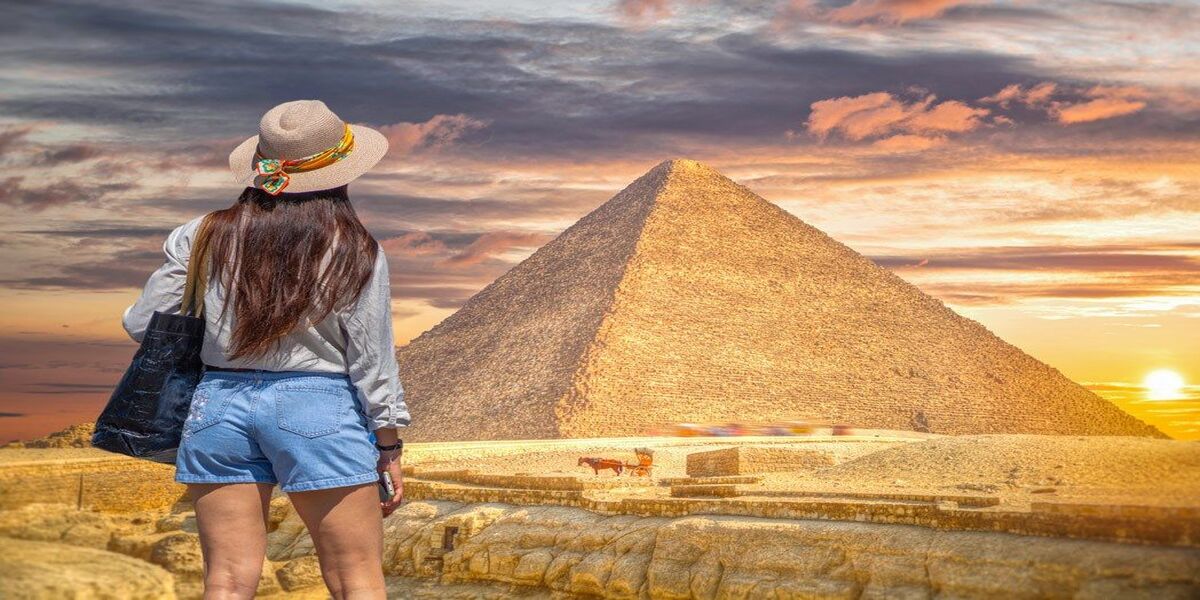
For centuries, travellers have been fascinated by the Egypt Nile Valley, a region of exceptional historical significance and spectacular beauty. Egypt, a timeless place, offers a rich tapestry of history, culture, and natural beauties that continue to awe and inspire. It could not have existed as a fertile, populous land, let alone sustained a great civilisation 5,000 years ago, without the river. The contrast between the fertile Nile Valley and its Delta, as well as the barren wastelands that surround them, has created its character and history. To the Ancient Egyptians, this was the motherland or Kemet the Black Land of black alluvium, where life and civilization grew as the benign gods intended – in contrast to the desert, which represented death and disorder and was ruled by Seth, the bringer of storms and disasters.
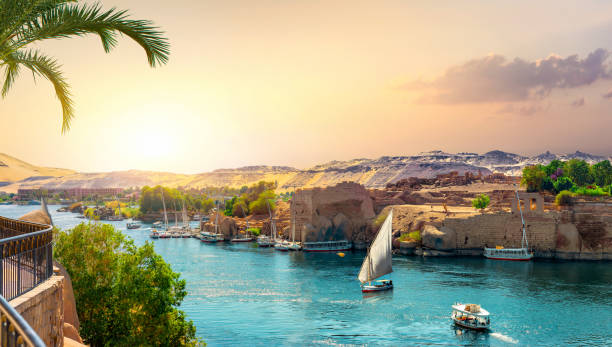
Travel tips for visiting the Nile Valley
Almost every Nile town is founded on top of layers of previous communities – pharaonic, Ptolemaic, Roman, and Coptic – whose historic names have frequently stayed, changed, and been Arabized. The Valley’s ancient monuments today form the world’s largest open-air museum, after a century and a half of excavation by a dozen Western nations and Egyptians since their independence. Along its banks, thousands of tombs (almost nine hundred in Luxor’s Theban Necropolis alone) and hundreds of temples are revealed: so many, in fact, that most visitors are pleased with only a fraction of this legacy.
What to do in the Nile Valley
The Nile: The Lifeline of Egypt
The Nile River is Egypt’s lifeline. The Nile, which flows for nearly 4,000 miles across eleven African countries, has fed Egypt’s verdant banks for millennia, allowing a vibrant civilisation to survive in the midst of the desert. The contrast between the lush vegetation of the Nile’s banks and the barren desert beyond is breathtaking as you cruise along its waters.
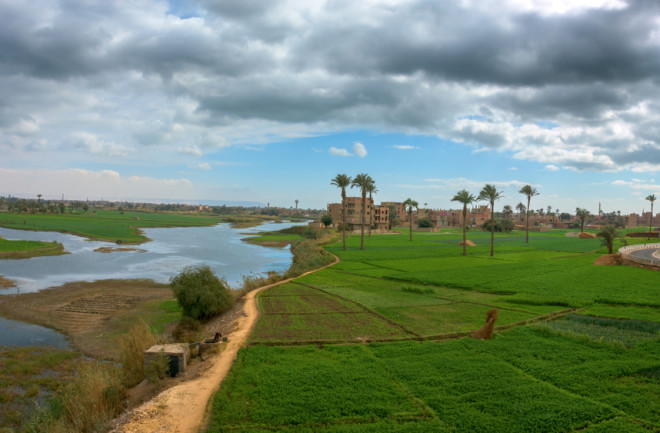
Pyramids of Giza: Wonders of the Ancient World
A journey to Egypt would be incomplete without seeing the renowned Pyramids of Giza. These massive monuments, created over 4,500 years ago, are a testament to the ancient Egyptians’ engineering brilliance and steadfast desire. One of the Seven Wonders of the Ancient World is the Great Pyramid of Khufu, the greatest of the three pyramids. Looking at these old wonders, one cannot not but be humbled by the past’s brilliance.

The Sphinx: Guardian of Secrets
The enigmatic Sphinx, a huge statue with the body of a lion and the head of a pharaoh, stands near the pyramids. The Sphinx, carved from a single block of limestone, has stood guard over the pyramids for millennia, its purpose and history unknown. As you stand in front of this legendary monument, you can’t help but wonder what secrets it may store.
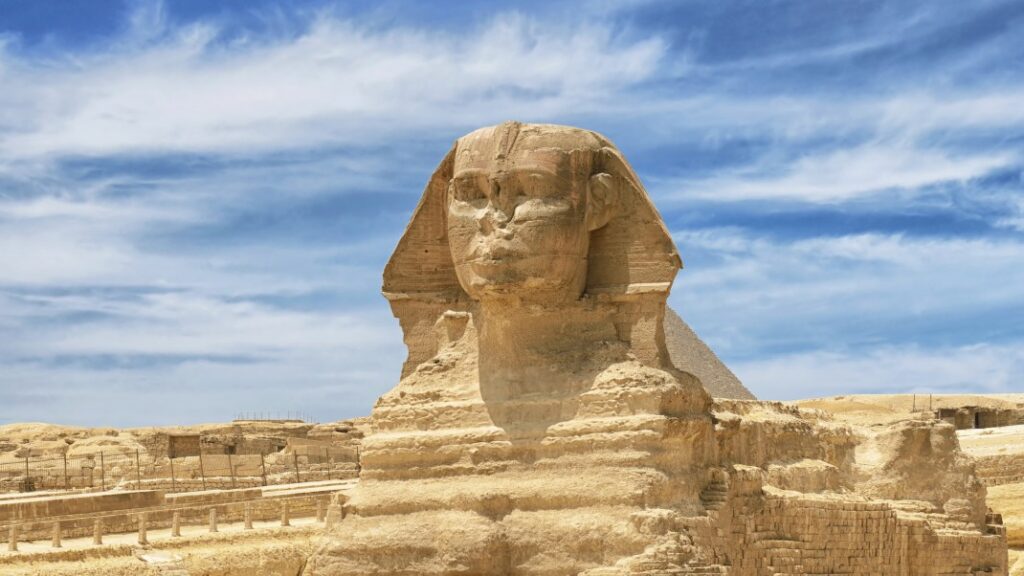
Luxor: A Window into Ancient Egypt
Luxor, which is known as the world’s largest open-air museum. The Temple of Karnak and the Valley of the Kings are located in Luxor, where ancient pharaohs built huge temples and intricate tombs to honour the gods and assure their place in the afterlife. Exploring the exquisitely adorned tombs of the Valley of the Kings or walking through the huge columns of Karnak is a journey back in time that allows you to connect with Egypt’s rich history.
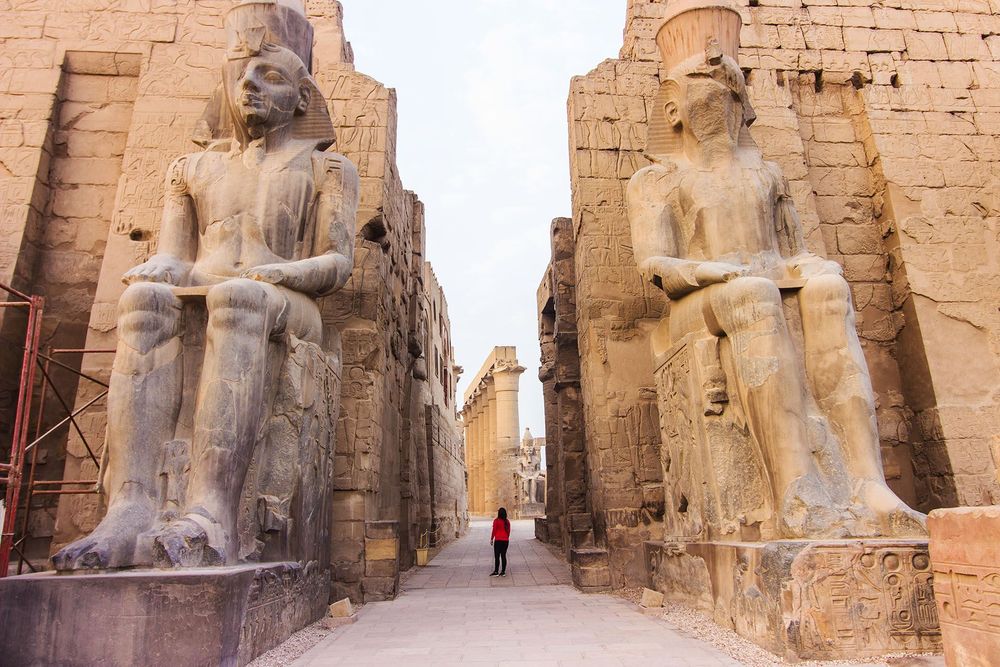
The Temples of Abu Simbel: A Testament to Love and Power
The temples of Abu Simbel are located in Egypt’s southernmost extremities, close the border with Sudan. Pharaoh Ramses II carved these temples into the rock to honour the gods and commemorate his victory at the Battle of Kadesh. The placement of the temples, which allows the first rays of the rising light to illuminate the inner sanctum twice a year, on the pharaoh’s birthday and coronation day, is the most striking feature of Abu Simbel. This magnificent display attests to the ancient pharaohs’ might as well as their devotion to the gods.

The Treasures of the Egyptian Museum
Anyone interested in Egyptology should pay a visit to Cairo’s Egyptian Museum. This large repository of ancient artefacts holds an amazing variety of mummies, jewellery, statues, and other items. The golden mask of Tutankhamun, a beautiful masterwork that formerly adorned the young pharaoh’s mummy, is one of its most famous displays. The museum is a treasure mine of Egyptian history, providing insight into the daily lives and beliefs of Egypt’s ancient inhabitants.
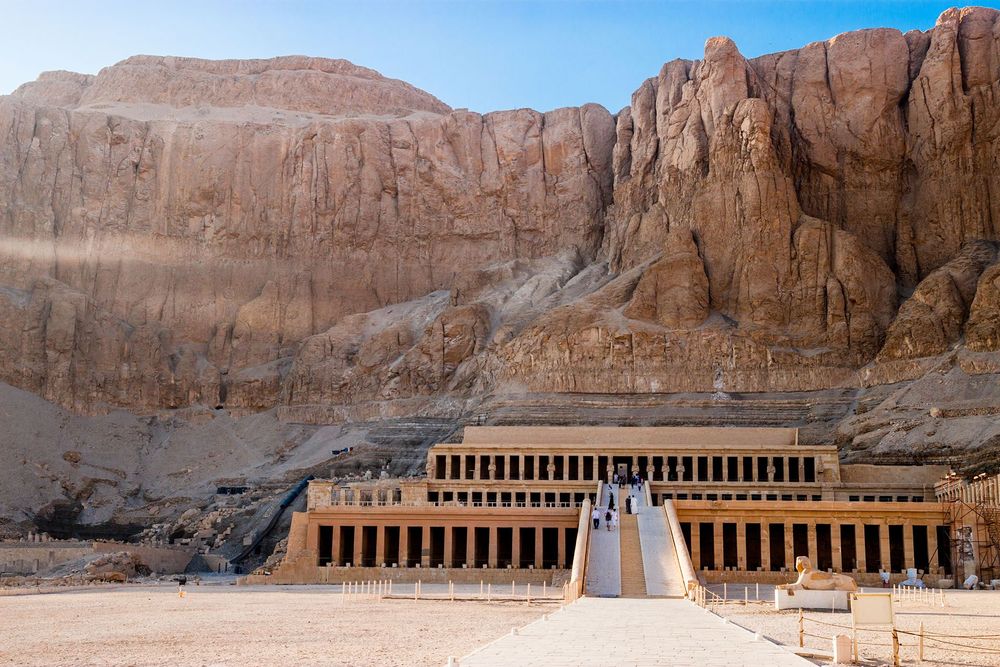
Cruising the Nile: A Voyage Through Time
Consider taking a Nile River boat to properly appreciate the grandeur of the Nile Valley. These magnificent travels allow you to rest in comfort while admiring Egypt’s ever-changing landscapes. From the luxury of your boat, you may enjoy the tranquil beauty of the riverbanks, where traditional communities and old temples bear witness to the Egyptian people’s enduring spirit.

The Warmth of Egyptian Hospitality
No trip to Egypt is complete without enjoying its superb cuisine and the kindness of its people. Egyptian cuisine is a delectable blend of flavours, with delicacies such as koshari, falafel, and baklava to tempt your taste buds. The true hospitality of the Egyptian people, though, will leave an indelible impression. Their kindness and enthusiasm to share their culture and traditions make each guest feel like a member of the family.

A Timeless Beauty
As our visual tour through Egypt comes to a close, one is struck by the ageless beauty of this wonderful land. Egypt’s historic wonders and modern charms combine to provide visitors with a unique experience. Egypt’s appeal will leave an everlasting stamp on your heart, whether you are drawn to the pyramids, the temples, or the lively culture.
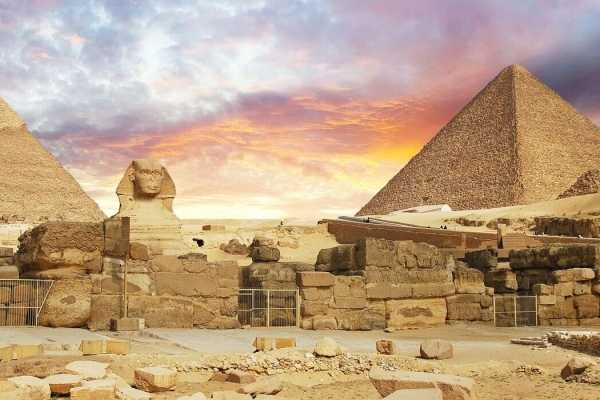
Best places to stay
Alexandria
Another well-known Nile Valley attraction is Alexandria. The city offers a wide range of lodging alternatives, from low-cost hostels to high-end hotels.
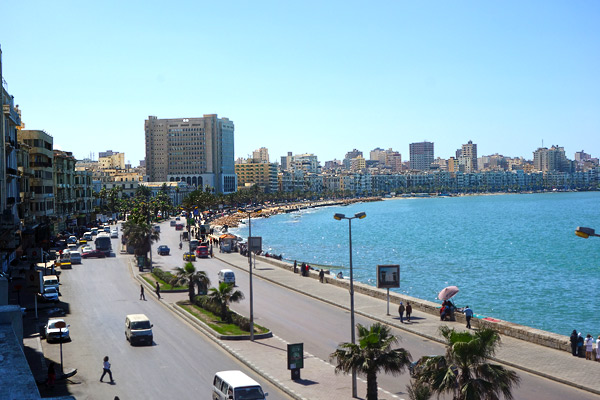
Cairo
Cairo is a popular destination since it offers a wide variety of hotels as well as easy access to the Pyramids of Giza and other attractions. In the city, there are both luxury hotels and more affordable ones.
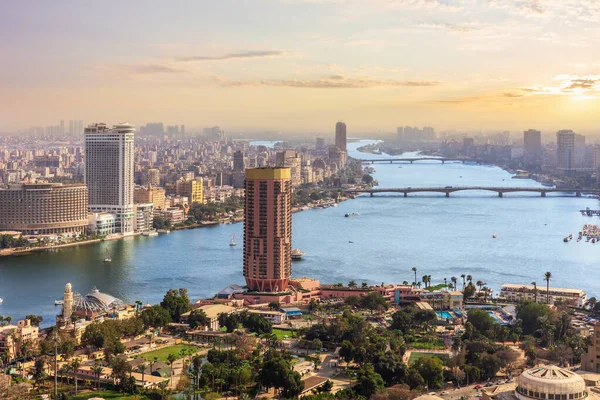
Western Desert
The Western Desert oases offer visitors a unique and off-the-beaten-path experience.
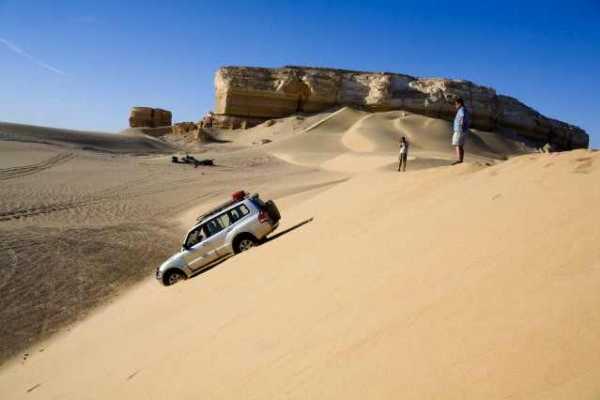
How to Navigate the Nile Valley
The Nile Valley is generally simple and straightforward to travel, with numerous options available to visitors. The following are some of the most common types of transportation
By train
Egypt has an extensive railway network, and trains are an excellent way to travel between major towns like Cairo, Luxor, and Aswan. They are frequently affordable and offer comfortable seating as well as air conditioning. However, they do not expand beyond the Nile Valley.
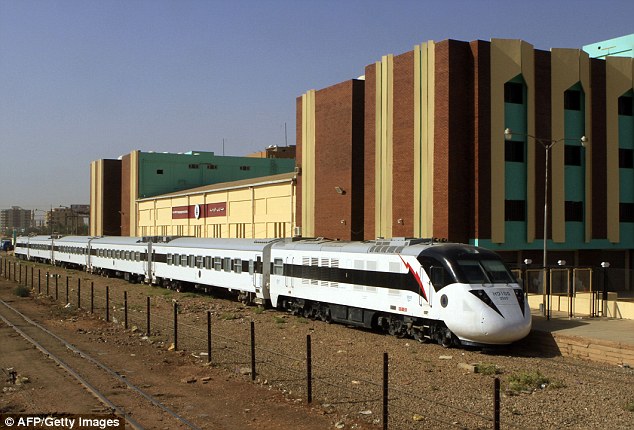
By bus
Buses are another popular means of transportation in the Nile Valley, and they are often the least expensive option. There are several bus companies in the area.

Taking a taxi
Taxis are commonly available in most Nile Valley cities and villages, and they provide a convenient and cost-effective way to get around. Many people are eager to book by the day or for longer trips. Agree on a fare before departing.

By boat
A felucca is an ancient Egyptian sailboat that may be rented for a relaxing Nile River cruise. This is a great way to take in the scenery and sights of the valley. Make a reservation in Aswan to follow the river’s flow.

The past and present cohabit peacefully along the Nile Valley, reminding us of this great civilization’s eternal legacy. When you return home from your trip to Egypt, you bring back not only memories and images, but also a deep respect for the country’s rich history and enduring beauty. Egypt genuinely is a land where time stands still, and its beauty is enthralling.



